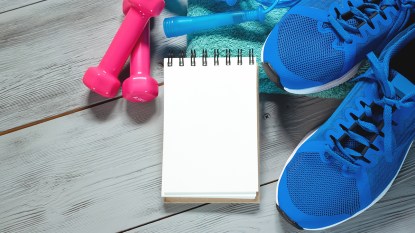Expert Advice: How Can I Prevent Bladder Leaks During Exercise?
Stress urinary incontinence affects more than 50 percent of postmenopausal women.

Bladder leaks are nothing to be embarrassed about — most women will experience them at some point in their lives. But even though they’re common, they aren’t normal and they don’t have to be permanent. Finding the right way to treat them is imperative so you can live without worry. Our first tip? See a pelvic floor physical therapist. If money is tight and insurance isn’t covering it, there are some stretches and exercises you can do at home. These tips from our expert, Dr. Barbara DePree, could help.
Meet our expert.
Barbara DePree, MD, is a gynecologist in private practice and director of Women’s Midlife Services at Michigan’s Holland Hospital. A Certified Menopause Practitioner, she is the founder of MiddlesexMD.com, an educational resource for women’s sexual health in perimenopause and beyond. To ask her a question, send an email to health@firstforwomen.com.
How To Prevent Stress Bladder Leaks
Q: I’m 55 and want to start an exercise routine, but I have stress urinary incontinence and I’m worried any activity will make my leaks even worse. What can help?
A: You’re not alone: Stress urinary incontinence (SUI) affects more than 50 percent of postmenopausal women due to childbirth, weight gain, weakened core muscles, and declining estrogen, all of which can cause the muscles that support the bladder to lose tone and, in turn, trigger leaking.
The good news? There are exercise routines you can try that have been proven to stop leaking. In fact, one study revealed that practicing yoga three times weekly slashed SUI frequency by 85 percent after six weeks. The investigators credit pelvic floor–strengthening poses called bridge, locust, and happy baby. What’s more, research in the Journal of Physical Therapy Science found a significant improvement in SUI symptoms in middle-aged women after 12 weeks of belly dancing just twice weekly. The unique dance moves, such as pelvic tilts and shimmies, target and strengthen the “hammock” of muscles lining the pelvic floor. And engaging your core muscles during the workout further tones those “hammock” muscles to stop leaking. The reason? Belly dance uses the same muscles activated during Kegels — which women sometimes have difficulty locating to perform the exercises correctly. You can find beginner belly dance videos and Yoga videos on YouTube.
Also helpful: avoiding bladder irritants such as nicotine, caffeine, carbonated beverages, and alcohol. And finally, if these exercises don’t help stop your leaks, a pelvic floor physical therapist can guide you in the proper techniques to truly strengthen your pelvic floor.
A version of this article originally appeared in our print magazine, First for Women.













